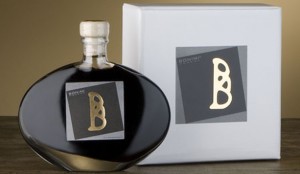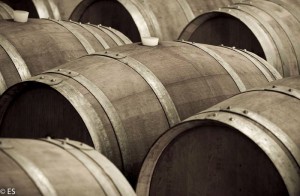Bonini
 Fabio, an actor and a sailor, but above all a native of Modena and a connoisseur of local history and traditions; Orazio, a chartered accountant and an enogastronomist. When we met in this land of age-old traditions and flavors, we discovered we shared a passion for the most refined expression of Modenese taste: traditional balsamic vinegar.
Fabio, an actor and a sailor, but above all a native of Modena and a connoisseur of local history and traditions; Orazio, a chartered accountant and an enogastronomist. When we met in this land of age-old traditions and flavors, we discovered we shared a passion for the most refined expression of Modenese taste: traditional balsamic vinegar.
As we savored the extraordinary products of this land, over many tastings and many visits to traditional vinegar makers, we decided to create our own vinegar.
We searched for the perfect balance between tart and sweet, between fluid and thick, between the aroma that assails our senses and the bouquet that lingers long afterwards on our palate and in our memory. We found the raw material, cooked must from prime grapes; we chose the barrels built by the most skilful master craftsmen; we adopted the traditional aging process, in which the vinegar ages slowly and without any additives. Our efforts were rewarded when our vinegar, sampled by the expert tasters of the Consorzio Produttori Aceto Balsamico Tradizionale di Modena, met their demanding standards and earned the seal of the consortium.
DOP certification (Denominazione di Origine Protetta, Protected Designation of Origin) is granted to selected balsamic vinegar makers in Modena. By choosing a DOP product, you are assured that it belongs to a unique tradition and culture, guaranteeing unadulterated quality and unrivaled flavor and taste.
Traditional Modena Balsamic Vinegar: How it is created

Traditional Modena Balsamic Vinegar ripens in dark and silent aging rooms, refined and aged for years through a series of barrels of different woods. It is then extracted and bottled according to two certified quality levels: aged for at least twelve years (classic, or “affinato”, balsamic vinegar), or for at least twenty-five years (“extravecchio” balsamic vinegar).
Following DOP regulations, the raw material used to make Traditional Modena Balsamic Vinegar comes from grapes of the Trebbiano variety, which have been grown for centuries in the province of Modena. There are four main steps to the creation of the vinegar: picking the grapes, crushing them, cooking the must and aging the vinegar. The aging stage requires the most skillful attention, and must be personally supervised by experts who have learned the ancient unwritten rules from the previous generation of master vinegar makers.
 Traditional Modena Balsamic Vinegar ages in a row of barrels of decreasing size: each barrel is topped up every year with vinegar coming from the larger one next to it, where the product has absorbed the flavors of a different wood. As the vinegar ripens, it develops its fullness and its balance between dense and volatile components; sugars and residue increase, and acidity stays constant. Its unique, traditional taste is a balance of sweet and sour, full, generous, savory, with velvety nuances in tune with its olfactory features. Traditional Modena Balsamic Vinegar is a bright, full dark brown in color; dense, yet free-flowing and smoothly syrupy.
Traditional Modena Balsamic Vinegar ages in a row of barrels of decreasing size: each barrel is topped up every year with vinegar coming from the larger one next to it, where the product has absorbed the flavors of a different wood. As the vinegar ripens, it develops its fullness and its balance between dense and volatile components; sugars and residue increase, and acidity stays constant. Its unique, traditional taste is a balance of sweet and sour, full, generous, savory, with velvety nuances in tune with its olfactory features. Traditional Modena Balsamic Vinegar is a bright, full dark brown in color; dense, yet free-flowing and smoothly syrupy.
In fine cuisine, Traditional Modena Balsamic Vinegar is used on fresh and steamed vegetables; as a base for sauces; as a final touch to fish or meat dishes; and even to top strawberries and vanilla ice cream. It is impossible to define a precise dosage for such a versatile and “individualist” product; however, some suggestions are offered by the past few centuries’ experience. Quantity should be barely a teaspoon per person. For fresh vegetables, the correct sequence is salt, Balsamic and olive oil. For cooked dishes, Balsamic should be added shortly before removing from the heat, so that it can flavor the preparation without dissipating the complexity of its aroma. For hot dishes served in individual plates, add Balsamic just before serving.





Leave a comment